Unboxing Villainous is one of the best board gaming experiences I have ever had. It was an impulse buy, picked up on the assumption that my roommates would be drawn in by the premise, and it worked. I’ve never had to put less effort into getting a full table of players. Even the non-gamers in the apartment were excited to take on the role of a Disney villain, plotting and scheming their way to victory.
That excitement only grew as I lay out the components. The player figures, chunky translucent totems that capture the essence of each character in gorgeous abstract forms, elicited paroxysms of joy. Oohs and aahs greeted Maleficent, Jafar, Ursula, Captain Hook, The Queen of Hearts, and even Prince John. The card art is lush and richly printed, and even the backs of the player decks are decorated with elegant and individualized line drawings. In no time at all, people were scrambling to lay claim to their favorite character.
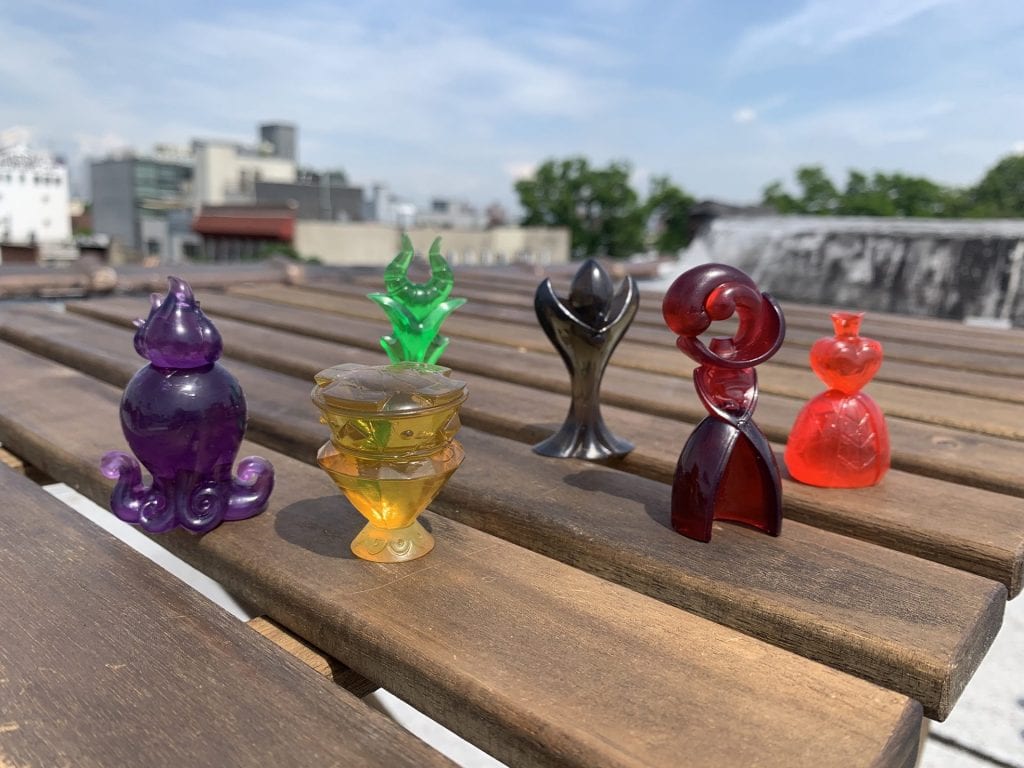
How to Play
Villainous is quick to teach, thanks to the straightforward mechanics. During setup, players receive two villain-specific decks and a board that is divided into four locations, each with a different constellation of action spaces. On your turn, you move your figure and carry out as many of the available actions as you wish. They’re simple enough: play, move, or discard cards; vanquish a hero; gain power, the game’s currency; or fate someone, a form of sabotage where you draw the top two cards of your victim’s hero-filled fate deck and play whichever you like.
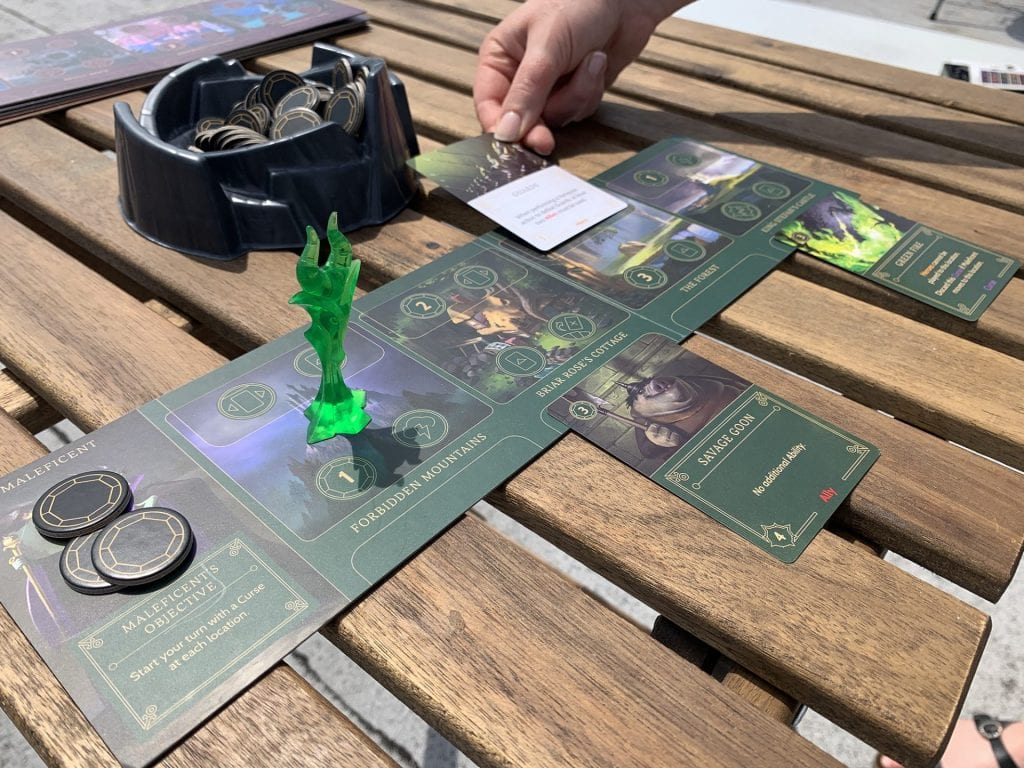
The game delivers on the promise of its premise with gentle asymmetry. That word can summon visions of high-complexity games like Root, where every player has an entirely different set of mechanics and objectives, but Villainous doesn’t take it nearly that far. Playing the game works much the same for everyone, but how you win is unique to your character. Captain Hook has to defeat Peter Pan at the Jolly Roger, Ursula has to capture King Triton and his crown in her lair, and Prince John has to amass power. Victory is achieved by helping the characters realize the dreams they were so unjustly denied in their movies. You get to revise history. It is an intensely satisfying idea for a game.
The Mood at the Table
The whole of our first game was joyous. Every single card was met with a reaction. Jafar summoned Gazeem and everyone cheered, greeting an old friend. The Queen of Hearts played a card called “Off With Your Head” and we hooted with glee. The mood was euphoric, all of us high on nostalgia. Villainous is designed to be accessible, so there was little to puncture the mood outside of the odd question about navigating a victory condition. For most characters, winning is surprisingly involved; Jafar, for example, has to play the Scarab Pendant to unlock the Cave of Wonders to play the Magic Lamp to find the Genie and move him step-by-step to the palace. The game does what it can to mitigate confusion—each player has an accompanying booklet that explains their goal and the steps involved—but on your first play it can be hard to keep track of.
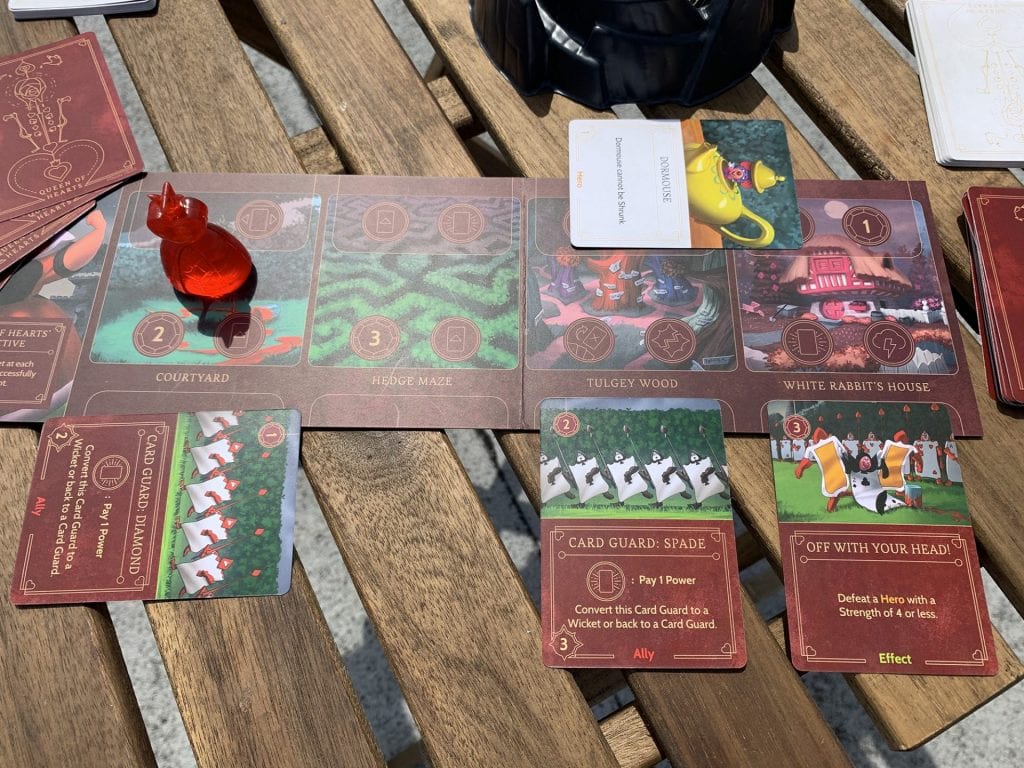
The game ended rather suddenly, with the Queen of Hearts coming out of nowhere to claim victory. Talking over the game, we realized that she had hardly, if ever, been fated. Prince John, with his obvious and growing pile of power tokens, had been fated straight to hell early in the game, and just about everyone else received regular doses of interference throughout the match, but the Queen of Hearts went unchallenged until it was too late. It’s a game that relies on players to keep one another in check. Half of the game is figuring out when to fate other people. A quick survey of the table showed that several players were in a position to win if they’d had just one more turn. We loved it.
A Race with No Leader
This brings us, though, to the fundamental issue I have with the design: Villainous is a race game where you cannot tell who is in the lead. And I suspect the designers agree with me, given that the first three expansions each take incrementally greater steps towards addressing that. Since the majority of victory conditions in the base game are too obtuse to be readable from across the table, you don’t get the tension of seeing someone right on your tail, or the tortuous thrill of coming this close to catching up. The ending is so sudden that coming close isn’t anything approaching a satisfying experience. We started a house policy of announcing when we were a turn or two away from winning in order to give everyone else a chance to fate the impending victor. This was done under the theory that people falling behind could potentially create an opening for themselves, but it didn’t up the emotional stakes.
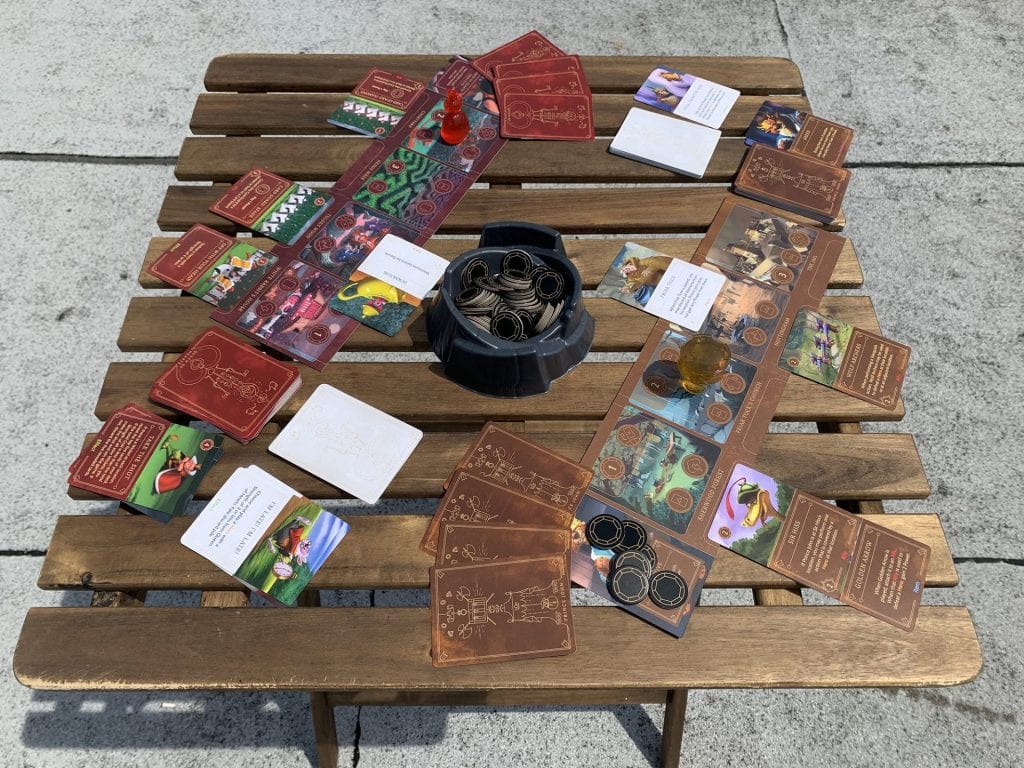
Final Thoughts
In the following weeks, my roommates and I blew through the different character combinations and the first two expansions, Wicked to the Core and Evil Comes Prepared. I noticed pretty quickly that my desire to play was directly tied to having new characters, and I wasn’t the only one. Villainous doesn’t have a lot of depth, and the fun it offers, while considerable, has more to do with the atmosphere and novelty, and less to do with the game itself. No matter who you play as, most of your turns are spent burning through your deck(s) until you get the one card that lets you move on to the next step, and that’s neither particularly exciting nor deep. Lack of strategic depth is not inherently a problem, I could play Spot It! any day of the week, but Disney Villainous falls in that troublesome pocket of being too much work and too little fun for the low level of strategic depth.
If you strictly like your games meaty and with a vast decision space, you might want to stay away; Villainous is not for you. On the other hand, if “play as your favorite Disney villain” gets your heart racing, you should absolutely seek it out. The game is visually striking, user-friendly, and those non-gamers in my apartment spent weeks asking “Do you want to play Villainous?” Even if I don’t think the game is entirely successful, I do think it’s a model of how designers should approach the interaction of theme and gameplay, and it’s a game I continue to enjoy thinking about, even if I no longer have interest in playing it. The communal joy and enthusiasm of that first game epitomize the best parts of this hobby. May life be full of games that are as exciting to unbox as Villainous.







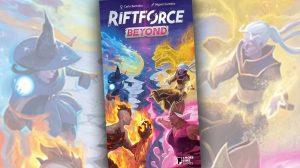




Beautiful review!
I was considering buying this game for my kids. I can walk away with this information in a new light!
Thank you very much for reading! I haven’t played it with kids, but it may be too much depending on how old yours are. The age recommendation on the box of 10+ seems spot-on to me. And for children I would 100% go with whichever set has their favorite characters, since the expansions work as standalone games. All of the expansions improve on the base game, to varying degrees.
I disagree that you don’t know when your opponent is about to win. In some cases like Prince John it’s blatantly obvious (have 20 power), or Maleficent (have a curse in each location). Even Jafar and Ursula are pretty straight forward, Jafar needs needs the Genie and Lamp, Ursula needs the crown and the trident. And it takes steps to get them, you just have to know when to recognize it. Not a single villain can win without seeing it coming. Even Queen of Hearts needs to have card guards in every location, and then converted into wickets so I’m not sure why you didn’t catch that.
Hi Van! Thank you for reading, and for your comment!I didn’t mean that it is impossible to tell how well characters are doing, or to see if someone is about to win. I just think it’s more difficult to tell than it should be. Of course everyone’s cards are visible to everyone else, but with so many cards out, it isn’t always easy to see the cards related to victory conditions. As I wrote in my longer piece on the Villainous expansions, which you can read if you’re interested (https://www.meeplemountain.com/articles/expanding-villainous-a-case-study-in-board-game-design/), I think the fact that Prince John and the Queen of Hearts are so easily spotted as being close to winning is a big problem for those characters. Definitely didn’t miss that, though I didn’t go into it here as much as I would now if I were to write this review today (this was my first!).
I love Disney villains! This game is so much fun!